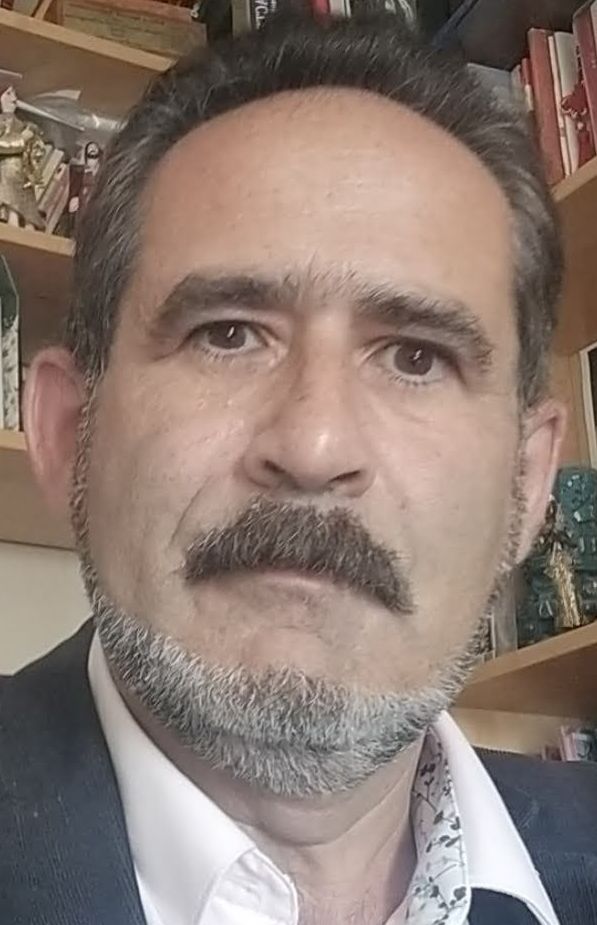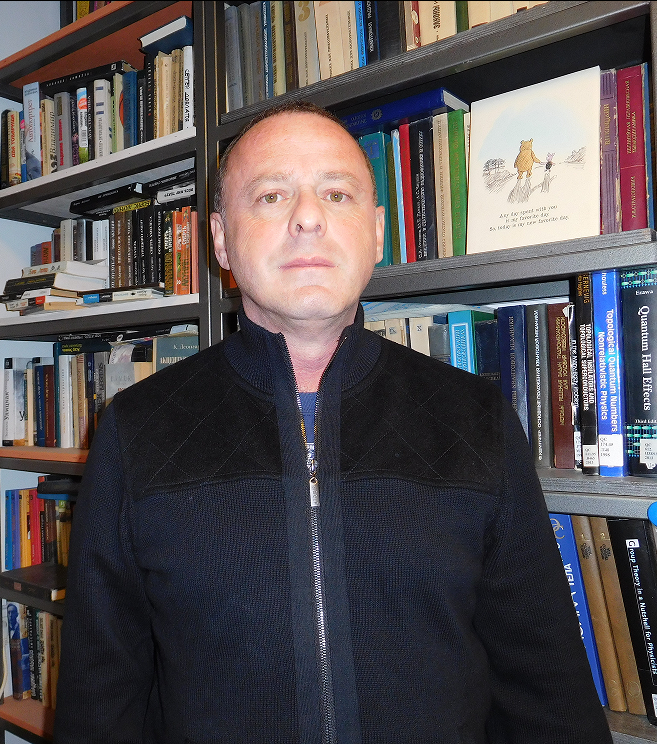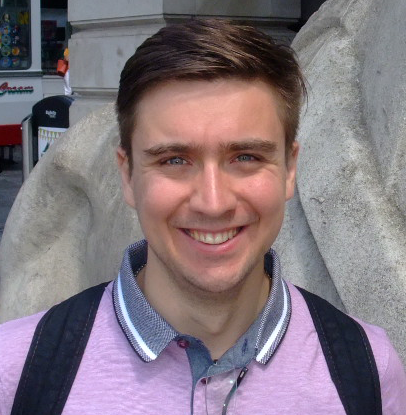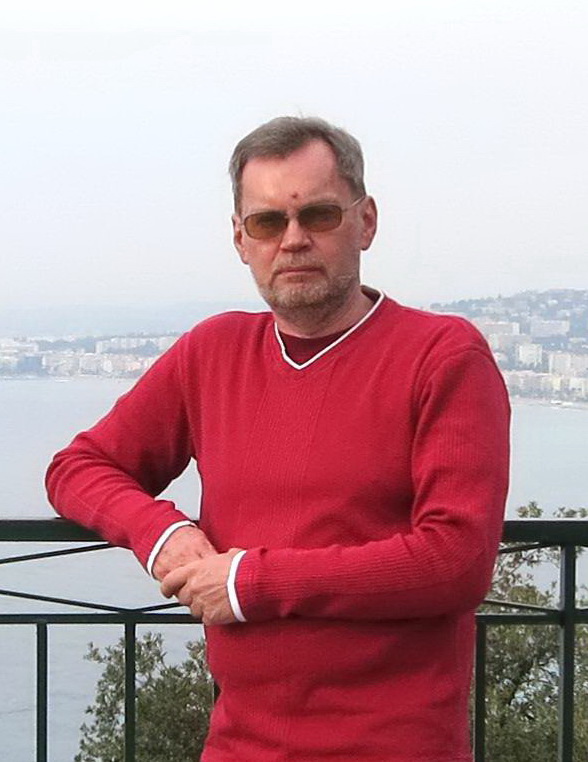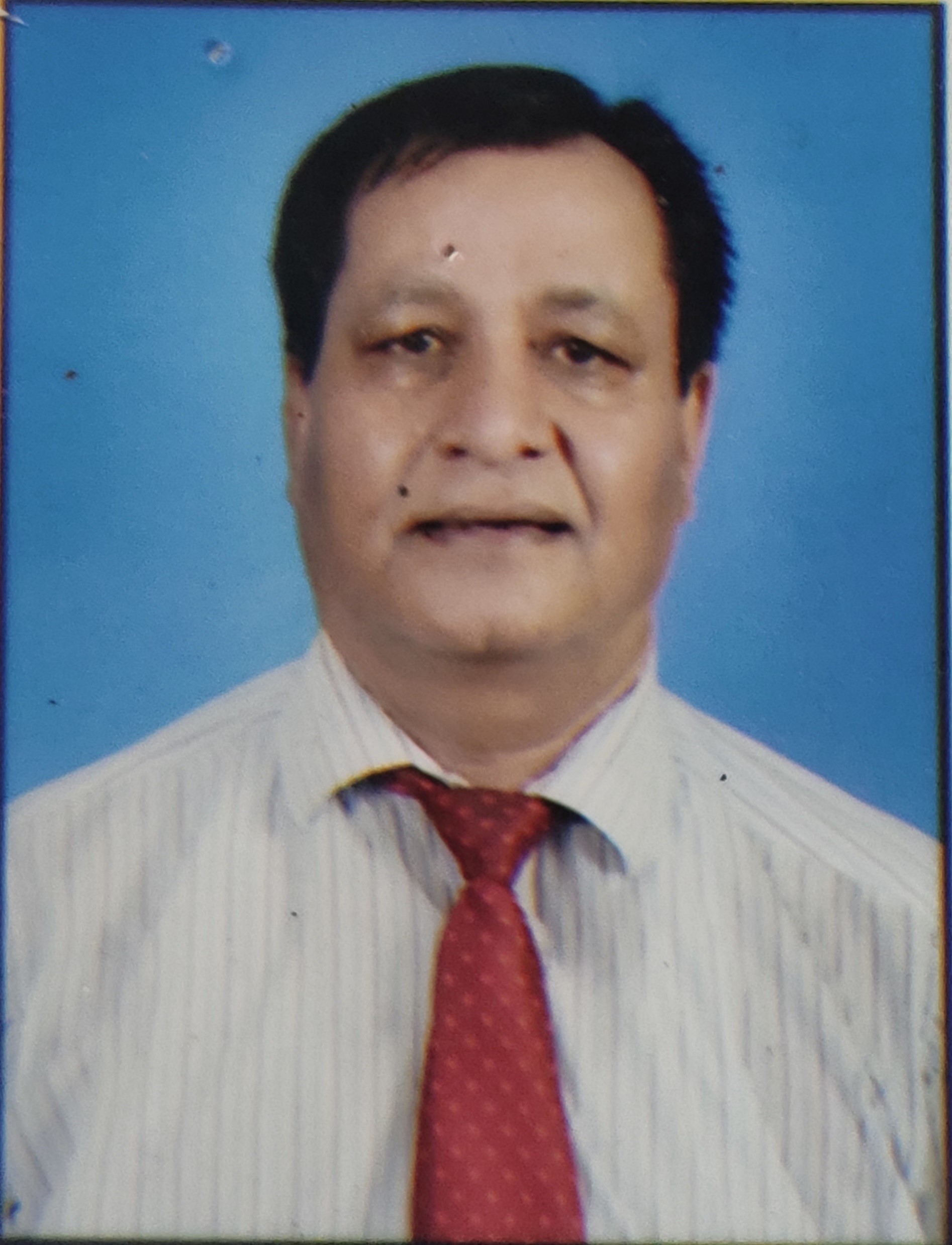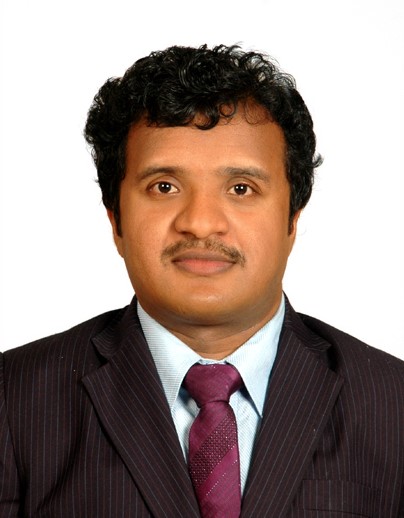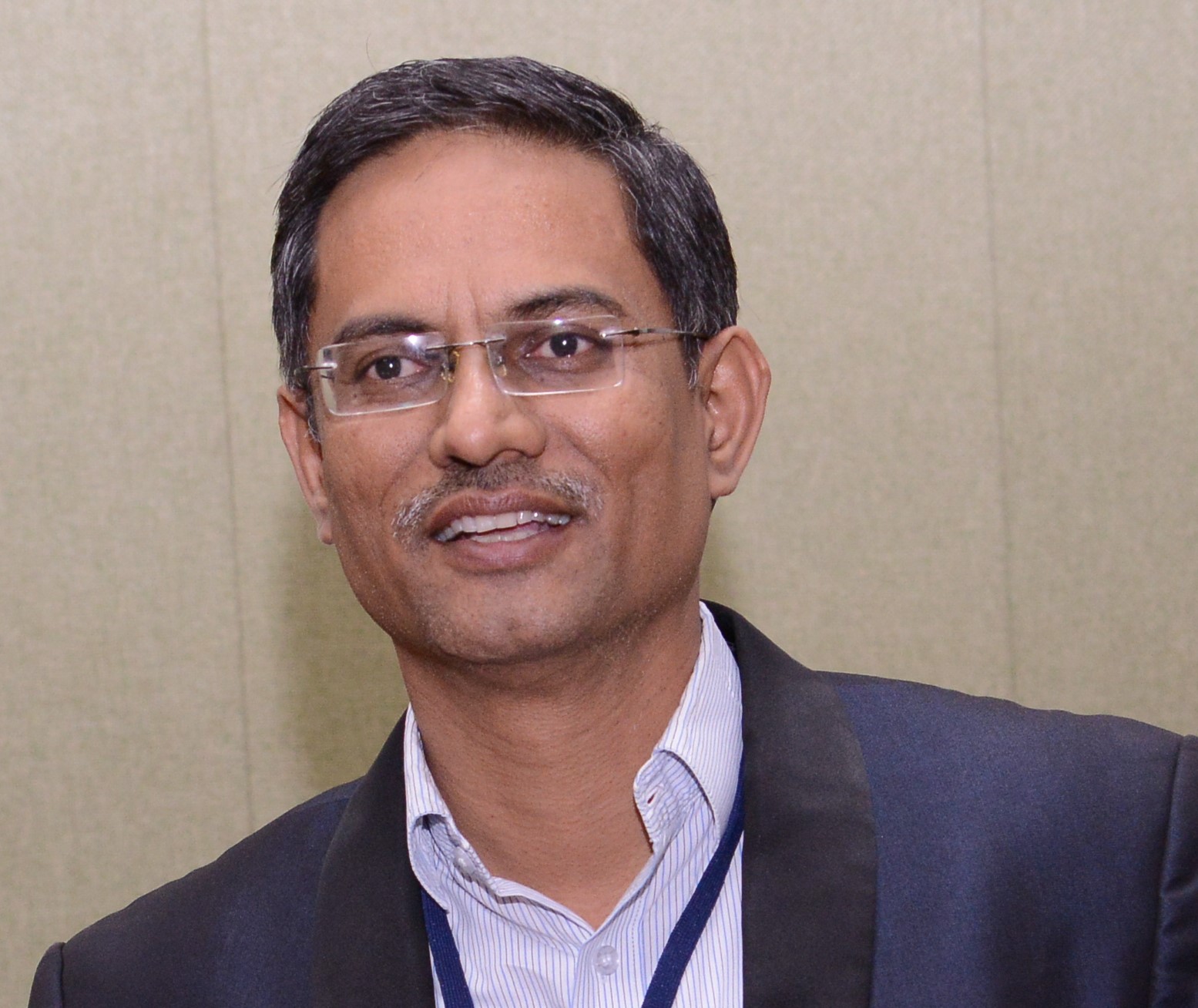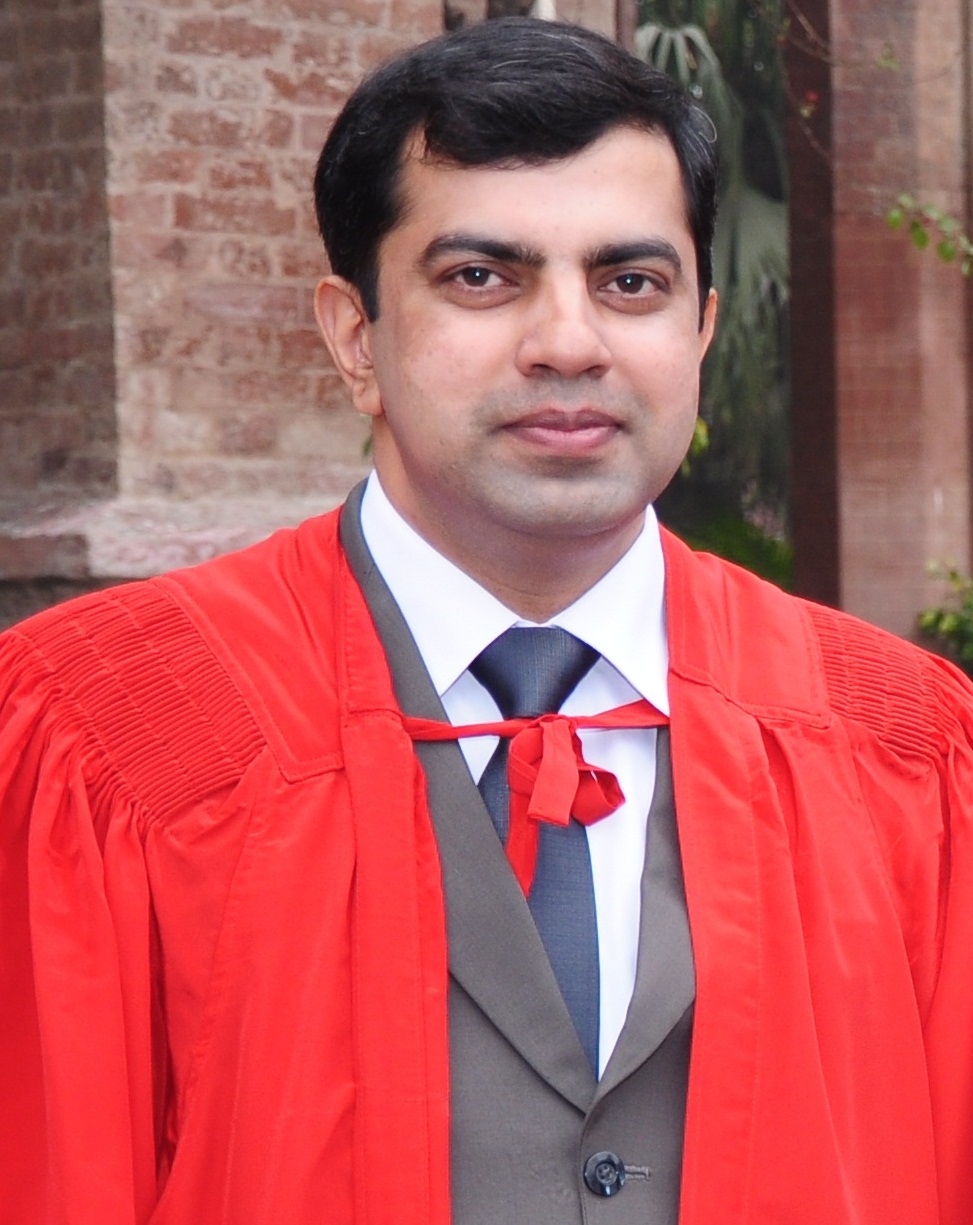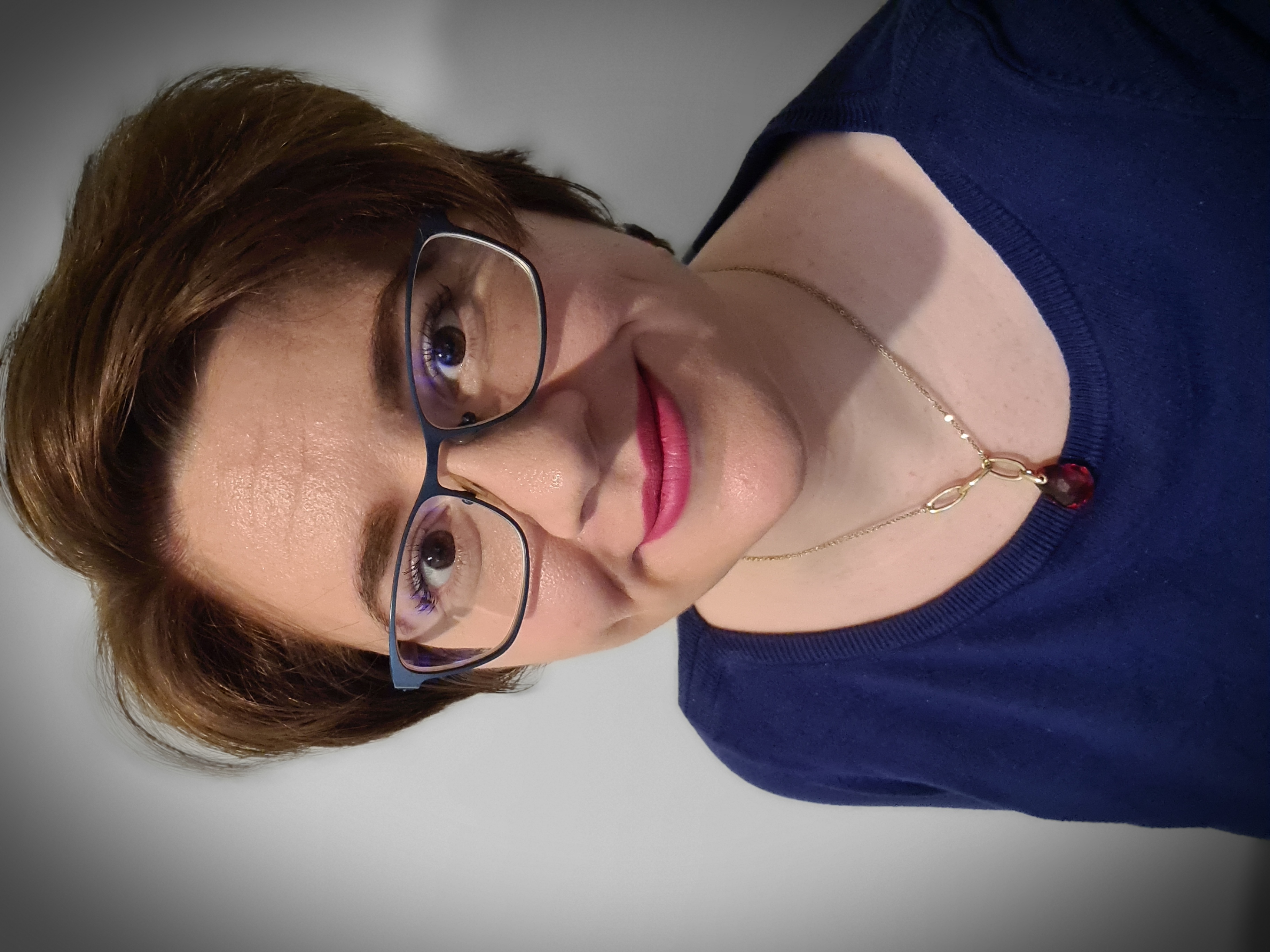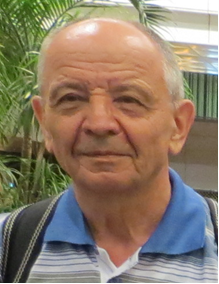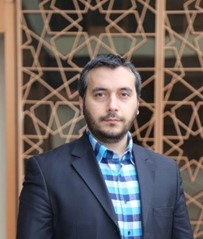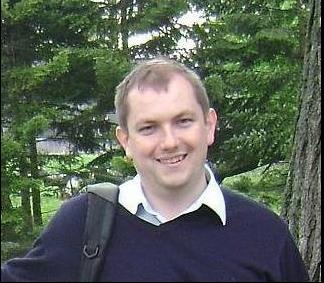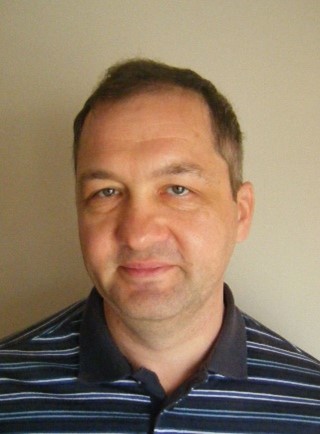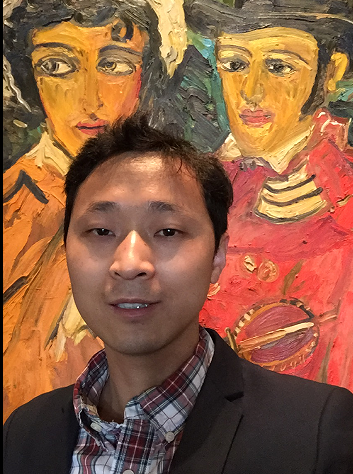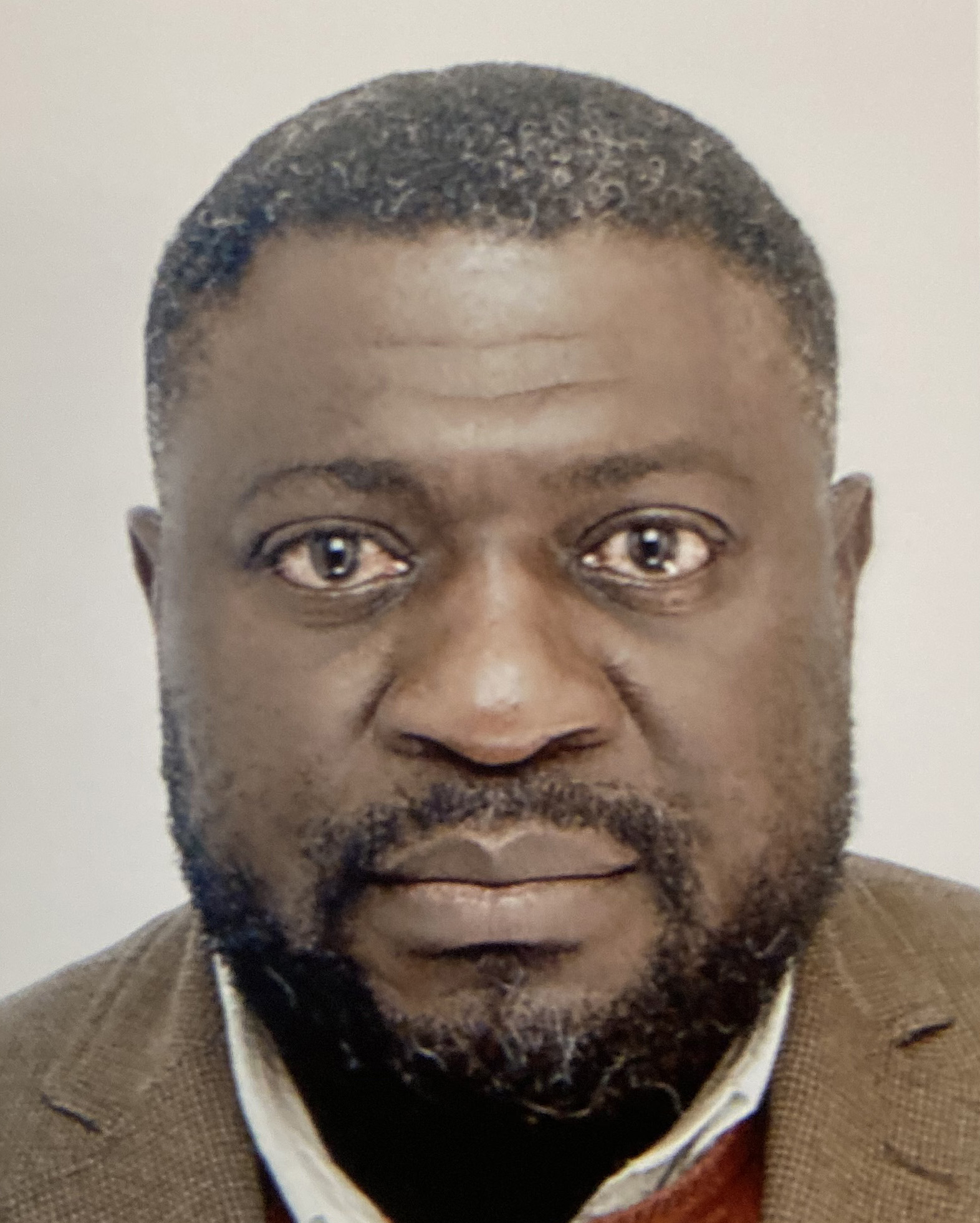Invited Speakers
Dr. Leon Mishnaevsky Jr
Senior Scientist, Technical University of Denmark, DenmarkSpeech Title: Reliability and Maintenance of Large Wind Turbine Blades: Materials Science Aspects
Abstract: European countries now have 205 GW of wind energy capacity. Wind energy accounted for 15% of the electricity the EU countries, including UK, in 2019. Wind turbines are large structures, which also can be more and more often installed offshore, with rather high costs of maintenance, repair and decommissioning. The requirements toward the wind turbine reliability are therefore very high, as compared with, for instance, automotive structures (where the service points are easily available) or even aerospace structures (which, in the case in aeroplanes, can be daily inspected, without any cost limitations). This sets rather high requirements to the materials, used in wind turbines, in particular, to the wind turbine blades, which are manufactured from lightweight composites, and are permanently moving, subject to complex mechanical and environmental loads. In this presentation, we will discuss several critical materials science related challenges, critical for wind turbine blades. Among these challenges, the problems of erosion and repair of wind turbine blades, protection and maintenance, and perspectives of waste management of composite blades are discussed. The applicability of computational modelling to the optimization of these processes and materials is demonstrated. The materials science solutions for the improving the wind turbine blade reliability, strength and end of life management are reviewed.
Keywords: Wind energy, Composites, Maintenance, Renewable energy.
Dr. Victor Kagalovsky
Professor, Department of Electrical and Electronics Engineering,Shamoon College of Engineering, Israel
Speech Title: Superconducting Correlations of the Edge States in a Topological Insulator
Abstract: We study the stability of multiple conducting edge states in a topological insulator against perturbations allowed by the time-reversal symmetry. A system is modeled as a multi-channel Luttinger liquid, with the number of channels equal to the number of Kramers doublets at the edge. Assuming strong interactions and weak disorder, we first formulate a low-energy effective theory for a clean translation-invariant system and then include the disorder terms allowed by the time-reversal symmetry. In a clean system with $N$ Kramers doublets, $N-1$ edge states are gapped by Josephson couplings and the single remaining gapless mode describes the collective motion of Cooper pairs synchronous across the channels. Disorder perturbation in this regime, allowed by the time-reversal symmetry is a simultaneous backscattering of particles in all $N$ channels. Its relevance depends strongly on the parity if the number of channel $N$ is not very large. Our main result is that disorder becomes irrelevant with the increase of the number of edge modes leading to the stability of the edge states' superconducting regime even for repulsive interactions.
Keywords: Topological insulator, Superconducting edge state, Parity.
Dr. Zakhar Kudrynskyi
Research Fellow, the University of Nottingham, Nottingham, United KingdomSpeech Title: The Rise of 2D Indium Selenide: a Novel van der Waals Material for Electronics and Optoelectronics
Abstract: Atomically thin layers of van der Waals crystals and their heterostructures, generally called as two-dimensional (2D) materials, have attracted enormous interest for nearly two decades now. Following the discovery of graphene, the first known truly 2D crystal, there has been a constant search for novel related materials to enrich the library of 2D compounds with new properties. Most attention has been focused on graphene itself, as well as semiconducting crystals of transition metal dichalcogenides and wide-gap insulator hexagonal boron nitride. However, during the recent years an exciting and rapidly growing development in the family of 2D materials involves indium selenide (InSe). This semiconducting crystal has a bandgap energy that increases markedly with decreasing layer thickness, enabling fabrication of devices with high broad-band photoresponsivity. In addition, it has a relatively low mass conduction band electrons and high electron mobility even in atomically thin films, larger than in silicon-based field effect transistors.
This talk reviews my recent research on this new 2D semiconductor. From the fundamental studies of 2D layers and heterostructures to the demonstration of prototype devices, I will discuss how this system can provide a platform for scientific investigations and new routes to ultra-thin electronics and optoelectronics, including high mobility field effect transistors and hybrid multi-layered structures for quantum metrology and photosensing [1-5].
References
[1] Bandurin et al., Nature Nanotechnology 12, 223 (2017).
[2] Kudrynskyi et al., Physical Review Letters 119, 157701 (2017).
[3] Ubrig et al., Nature Materials, 19, 299 (2020).
[4] Kudrynskyi et al., (Nature) Communication Physics, 3, 16 (2020)
[5] Buckley et al., Advanced Functional Materials, 2008967 (2021).
Keywords: 2D crystals, InSe, van der Waals heterostructures, Quantum effects.
Dr. Sergei Bronnikov
Professor, Physical Department, Institute of Macromolecular Compounds (IMC), Russian Academy of Science, RussiaSpeech Title: Electrical Conductivity of Polymer-based Composites Filled with 0D, 1D, 2D, and 1D:2D Carbon Nanoparticles
Abstract: Polyazomethine (PAZ)-based composites filled with carbon nanoparticles, such as fullerene C60, muli-walled carbon nanotubes (MWCNTs), reduced grapheme oxide (rGO), and MWCNTs:rGO hybrids, amounted between 0 and 2 wt% have been prepared. Their electrical conductivity was investigated in wide ranges of frequency (1– 106 Hz) and temperature (-130 – 150 °C) with a broadband dielectric spectroscopy technique. We found that the PAZ/MWCNTs composite exhibit the highest electrical conductivity as compared with other PAZ-based composites and exceeds that of neat polymer for ca. 6 orders at low frequency (1 Hz) and room temperature. We believe that this superior characteristic of PAZ/MWCNTs composite is achieved because of strong interfacial interactions between polymer chains and MWCNTs realizing via π-π interaction between the phenyl rings in the polymer chain and MWCNTs. The existence of interfacial interactions was confirmed by Raman spectroscopy technique. The interfacial interactions promote MWCNT bundles disentanglement and their perfect distribution in the polymer matrix justifying by SEM and AFM images. Furthermore, the entangled MWCNTs can penetrate into polymer crystallites, thus decreasing the polymer degree of crystallinity as detected by WAXD technique.
Keywords: Polymer nanocomposites, conjugated polymer, carbon nanoparticles, electrical conductivity.
Dr. Farid Khan
Nanomaterials Discovery Laboratory, Department of Chemistry,Dr. HariSingh Gour Central University, SAGAR-India
Speech Title: Nanocomposites of Polysaccharides with Ca2+ and their Applications in Sensors and Catalytic Conversion of Cr(VI) to Cr(III)
Abstract: Polysaccharides are a diverse class of polymeric materials of natural (animal, plant, algal) origin formed via glycosidic linkages of monosaccharides and are known for making composites when they are crosslinked with di or tri valent cations. Such materials are non-toxic, economically viable, easily available and environmentally benign. The applications are many like sensors, targeted drug delivery, tissue engineering, catalytic conversion of toxic metals and bound heeling. Worldwide, industrial development increases the toxic metals such as As, Hg, Cd and Cr in soil and ground water. Amongst these metals, Cr(VI) is emerged as the most hazardous metal to living things. The excess amount of Cr(VI) generated by electroplating, leather tanning, metal policing, pigment industry, cooling tower, steel manufacturing and photography causes severe problem in kidney, liver, vomiting, diarrhea and skin disorder. Several methods are available for the removal of Cr(VI) including adsorption, bio-sorption, electro coagulation, ion exchange, filtration and photo catalytic reduction. Herein, electrochemical method is used to determine Cr(VI) using Alginate(alg.) /Carboxymethylcellulose(CMC)/Dextran(Dex.)/MnO2/g-C3N4/Ca with detection limit of 0.63 ng/mL which is the lowest limit reported so far. The UV-Vis. spectroscopy is used to reduce Cr(VI) to Cr(III) in presence of NaBH4 just in 26.63 s without using H2SO4 which is toxic and the reaction kinetic become uncontrolled when H2SO4 is used.
Dr. Pratap Kollu
Center for Advanced Studies in Electronics Science and Technology (CASEST),School of Physics, University of Hyderabad, India
Speech Title: Nanocomposite 2D Material Matrix for Battery Anode Materials
Abstract: Porous CoFe2O4 nanoclusters with different concentrations of graphene based composites were synthesized by a simple solvothermal process. The electrochemical properties of prepared CoFe2O4–reduced graphene oxide (rGO) composites were evaluated using polyvinylidene fluoride and Na-alginate as binder materials.
The synthesized porous CoFe2O4–rGO composites were characterized using an X-ray diffractometer (XRD, X'pert PRO MPD, PANalytical, Philips) with Cu Kα radiation (λ = 1.54 Å at 40 kV and 30 mA). The size and shape of synthesized samples were examined using Field Emission Scanning Electron Microscopy (FESEM)-EDS (JSM-7600F, JEOL). Transmission electron microscopy with energy dispersive spectroscopy (TEM), JEOL 2010F HRTEM, Japan, with 200 kV operating voltage was used to capture the morphology and crystallinity of porous CoFe2O4–rGO composite samples. The CoFe2O4 + 20% rGO composites with alginate binders deliver a stable maximum discharge capacity of 1040 mA h g−1 at 0.1 C, which is nearer to the theoretical capacity (914 mA h g−1) of this material. The alginate binders hold the integrity of the electrode and 20% rGO will give the electron transportation network during the conversion reaction in CoFe2O4 + 20% rGO composites/alginate electrodes.
Dr. Andreea L. Chibac-Scutaru
Researcher, Polyaddition and Photochemistry Department,"Petru Poni" Institute of Macromolecular Chemistry of Romanian Academy, Romania
Speech Title: CeO2Nanoparticles Embedded in Different Cellulosic Substrates: Photocatalytic Materials for Pollutant Removal or Organic Reactions
Abstract: Photocatalysis plays a pivotal role in today’s global issues, meeting the requirements of sustainable chemistry and green organic synthesis, with applications in a large variety of processes, from organic pollutants mineralization to fine organic reactions. CeO2 NPs is a feasible "platform" for the next generation of photocatalysts, since CeO2 has a band gap similar to TiO2 NPs (Eg = 3.19 eV), a particular outer electron configuration ( [Xe] 4f15d16s2) that enhance the electron transfer, low price (6.36 USD/kg in 2018), reversible shift of the oxidation state between Ce3+ and Ce4+, in the cubic fluorite structure form oxygen vacancies, are long-term stable and nontoxic. Unfortunately, the use of inorganic nanoparticles as photocatalysts is limited by their agglomeration tendency, which leads to a decrease in their surface area and eventually of their photocatalytic efficiency, but also to the difficulties encountered during their separation and reuse. To overcome these drawbacks, in the literature was emphasized that the use of various polymers as supports for the efficient immobilization of active photocatalytic nanoparticles could represent a viable solution, due to some unquestionable advantages of polymeric supports: resistance to ultraviolet radiations, high durability, chemical stability, and easy availability.
In view of all these information, this study reports the design of multiple cellulose-derived platforms for efficient immobilization of pristine/functionalized CeO2 nanoparticles. The resulted nanocomposites were successfully tested as photocatalysts for the photodegradation under UV irradiation of the hazardous pollutants methyl orange, Congo red and 4–nitrophenol or for the photoreduction reaction of 4–nitrophenol. The reusability of the photocatalysts after several cycles and their efficiencies under visible irradiation were also tested.
Keywords: CeO2 NPs, surface nanoparticles functionalization, cellulosic matrix, cellulose regeneration/oxidation, photocatalysis/photoreduction
Acknowledgements: This work was supported by a grant of the Romanian Ministry of Education and Research, CNCS–UEFISCDI, project number PN-III-P1-1.1-TE-2019-1245 (23/27.08.2020), within PNCDI III.
Dr. T V V L N Rao
Professor, Department of Mechanical Engineering, Madanapalle Institute of Technology & Science, IndiaSpeech Title: Partial Slip Texture Configuration Analysis in Slider and Journal Bearings
Abstract: There has been widespread interest in partial slip and texture configuration analysis in fluid film bearings. It has been recognized that the tribological performances of high-speed sliding surfaces are modified with partial extent of slip and textures. The performance of slider and journal bearings are enhanced in terms of improvement in load capacity and reduction in coefficient of friction. The partial slip texture designs aimed at providing the desired performance of the fluid film bearings are discussed.
Dr. Muhammad Akhyar Farrukh
Assoc. Prof. Department of Chemistry,Forman Christian College (A Chartered University), Pakistan
Speech Title: Graphene Based Metal Oxides Nanocomposites and Their Potential Applications
Abstract: Green, Bio and Chemical methods have been used to synthesize the nanocomposites containing rare earth-transition metal oxides for the purpose to achieve enhanced activities for their applications in degradations of textiles pollutants, pesticides, organic pollutants, explosive materials etc. Other applications like hydrogenation reactions, slow release fertilizers, forensics, nanofiltration and solar cells have also been studied.
We have successfully synthesized more than 50 nanocompostes with variety of metals. Multiple approaches have been carried out to synthesize the rare earth-transition metal oxides nanocomposites as well as reduced reduced graphene oxide doped with metal oxides nanocomposites. Various factors e.g. change in precursors, pH, temperature, feed rate, surfactants, solvents, methods of preparation, concentration of precursors, were studied which change the efficiency of the nanocomposites. Our focus is to synthesize nanocomposites having band gap in the visible region so that they may be used for enhanced catalytic activity under sun light.
The influence of surfactants and solvents on the activities of nanocomposites for their application in waste water treatment in chemical industries was studied and nanofiltration system was developed.
The structural investigation, thermal degradation, crystallite size, morphology, surface and photocatalytic properties of synthesized samples were studied by using different characterization techniques i.e. Thermogravimetric analysis (TGA), Differential scanning calorimetry (DSC) Fourier transform-infrared spectroscopy (FTIR), Particle Size Analyzer (PSA), Powder X-ray diffraction (XRD), Scanning electron microscopy (SEM), Transmission electron microscopy (TEM), and Ultraviolet-Visible spectrophotometer (UV-VIS).
Dr. Anca Mazare
Friedrich-Alexander University, Department of Materials Science, GermanySpeech Title: Anodic Surface Modification of Titanium and Its Alloys: Crucial Aspects for Biomedical Applications
Abstract: Titanium and titanium based alloys are well established as ideal implant biomaterials and moreover tremendous attention was given in the last 20 years to nanoscale surface modifications as it leads to improved biocompatibility and corrosion resistance. Electrochemical anodization is the most widely used method for growing self-organized TiO2 nanostructures, as nanotubes, nanopores, mesoporous, etc. [1,2]. Their widespread use is mostly enabled by the nanoscale topography, large surface area, directional charge and ion transport properties, exclusion effects and defined diffusion behaviour. In regard to biomedical applications, the nanotopography of the surface as well as its high surface are clearly affecting their use in specific applications (such as osseointegration, antibacterial activity, drug delivery, mitigation of the inflammatory response, etc.) [1-3]. From this respect, anodization allows growing of self-organized TiO2 nanotubes directly on the metallic substrate, as well as scalability, adaptability to other substrates such as alloys, and very good control over the nanoscale geometry [1]. Cells react to such nanoscale dimensions and can be synergistically influenced by the nanostructures morphology (e.g. nanotube diameter) and/or by addition of growth factors [1,2]. Herein we discuss an overview of the influence of the anodization parameters for obtaining different nanotubular morphologies and their effect on the top morphology of the nanotubes (initiation layer, open-top, nanograss) as well as crucial aspects of nanostructuring via anodization tailored for biomedical applications. In addition we present a very synthetic overview of the effect of such morphologies in view of biomedical applications [3-5] and their tremendous advantage for further use in biomedical applications.
Keywords: Electrochemical anodization, TiO2 nanotubes, Biomedical applications.
References
[1] K. Lee; A. Mazare; P. Schmuki Chem. Rev. 2014, 114, 9385.
[2] M. Kulkarni; A. Mazare; E. Gongadze; S. Perutkova; V. Kralj-Iglič; I. Milosev; P. Schmuki; A. Iglič Nanotechnology 2015, 26, 062002.
[3] R. Ion, M.G. Necula, A. Mazare, V. Mitran, P. Neacsu, P. Schmuki, A. Cimpean, Current Medicinal Chemistry 2020, 20, 1.
[4] M.H. Kafshgari, A. Mazare, M. Distaso, W.H. Goldmann, W. Peukert, B. Fabry, P. Schmuki, , ACS Applied Materials and Interfaces, 2019, 11(16), 14980.
[5] A. Mazare, J. Park, S. Simons, S. Mohajernia, I. Hwang, J.E. Yoo, H. Schneider, M.J. Fischer, P. Schmuki, Acta Biomaterialia, 2019, 97, 681.
Dr. Vasily Lutsyk
Head of Materials CAD Sector,Institute of Physical Materials Science at the Siberian Branch of the Russian Academy of Sciences.
Professor, Banzarov Buryat State University, Russia
Speech Title: Microstructures Design in MgO-SiO2-Al2O3 System by Means of T-x-y Diagram 3D Computer Model
Abstract: A computer model of the T–x–y diagram of MgO–SiO2–Al2O3 system is used to show the possibility of analysis of its microstructure constitution in terms of competition between primary and eutectic crystals by means of vertical mass balance diagrams calculated for a given centroid over the whole temperature range. The usefulness of horizontal mass balance diagrams is considered for studying phase relations at a fixed temperature along the chosen isopleth. Mass balances were used to determine the crystallization path at the quasi-peritectic liquidus point with the invariant reaction L + Al2O3 = 3Al2O3 • 2SiO2 + MgO • Al2O3, whose composition was taken into account in giving a rationale to corundum armor element technology. Thus, not only do developed models make it possible to visualize the geometry of a phase diagram, but they are a source of information on crystallization and microstructure formation stages, making it possible to qualitatively and quantitatively evaluate phase ratios and phase assemblage ratios for a given composition.
Keywords: Phase diagram, 3D computer model, Microstructure design, Concentration domain, Material genome.
Acknowledgements: It has been performed under the program of fundamental research SB RAS (project 0270-2021-0002) and was partially supported by the Russian Foundation for Basic Research (project 19-38-90035).
Dr. Hasan KÖTEN
Associate Professor, Head of Mechanical Engineering Department,Istanbul Medeniyet University, Turkey
Speech Title: Special Applications in the Nanomaterial Technology
Abstract: In this study different nanostructures have been synthesized and deposited on p-type porous silicone to investigate their photovoltaic properties. The morphology of the synthesized structures has been investigated via scanning electron microscopy and it has been determined that the structures are in the nanoscale. Energy dispersive spectroscopy has been used to investigate the composition of the synthesized structures, and it has been determined that they have defects. The absorption measurements have been performed by ultraviolet-visible spectrophotometry. Based on these absorption measurements, the band gaps of the nanostructures have been calculated as 3.11 eV for spherical ZnO, 3.12 eV for flowers ZnO and 3.64 eV for ZnS. The nanostructures were deposited to obtain thin films in different thicknesses by using a spin-coating method on porous p-type silicone substrates, and then the photovoltaic and electrical properties were investigated. According to the obtained experimental results, it has been determined that the photovoltaic properties of the sample depend on the film thickness. Consequently, ZnS and n-type ZnO nanostructures have been synthesized by a sol-gel method and it has been found that they have photovoltaic properties.
Dr. Paweł Pęczkowski
Assistant Professor, Institute of Physical Sciences, Faculty of Mathematics and Natural Sciences,Cardinal Stefan Wyszyński University, Poland
Speech Title: Influence of Multiferroic and Ferromagnetic Dopants on the Structural and Superconducting Properties of the YBCO Superconductor
Abstract: Optimizing high-Tc superconducting materials for the production of controlled nanodevices is critical for industrial applications. In my presentation I will present the results of our group research showing the effect of a small amount of YMnO3(YMO) multiferroic from 0.1 wt% to 5.0 wt% on the change of microstrultural and superconducting properties of the basic high-Tc YBa2Cu3O7‒δ (YBCO) superconductor. The Raman spectra measurements showed a slight deterioration of the YBCO‒YMO superconducting state in the total YMO content, which is due to the disappearance of the orthorhombic phase seen as the O(4) band shifting towards higher wave numbers. It was found from magnetic measurements that a small addition of YMO (about 1.0 wt%) Does not significantly change the properties of the superconducting YBCO crystallites, and most composites show a critical temperature (Tc) close to 92 K.
The presentation will also discuss the results of the diffusion process between YBCO and Fe particles in the amount of 1.0 wt% to 25.0 wt%. Fe diffusion into YBCO arrays can be fundamental to multilayer systems with YBCO|Fe-stop interfaces. The test results (X-ray diffraction and Mössbauer spectroscopy) showed that the orthorhombic structure of YBCO assumes 3.0 wt%. Fe, while with a higher Fe content, the formation of BaFeO3-δ and iron oxides was observed. The measurements also confirmed the strong suppression of superconductivity in YBCO-Fe materials containing more than 7 wt% Fe. Thanks to the XAS absorption edge research carried out at the "Solaris UJ" Synchrotron Center in Kraków, the valence of Cu2+ was confirmed, and a contribution of the 2p3d10L final states was evidenced, (where L - stands for ligand hole), which provides crucial information on the mobility of electrical carriers from the Cu–O2 planes.
Keywords: High-Tc superconductors, Multiferroic and iron compositions, Ceramics materials, Diffusivity, Structure and magnetic properties, Spectroscopic measurements
Dr. Oleksandr Tkach
Researcher, CICECO – Aveiro Institute of Materials,Department of Materials and Ceramic Engineering, University of Aveiro, Portugal
Speech Title: A Role of the Perovskite Lattice Vacancies in Antiferrodistortive Phase Transition of Doped Strontium Titanate Ceramics
Abstract: SrTiO3-based compounds have been attracting considerable interest both for a wide range of applications and from a fundamental point of view [1,2]. Fundamentally, perovskite-structured SrTiO3 undergoes a cubic (Pm3m) to tetragonal (I4/mcm) phase transition at ~108 K (Ta) associated with rotations of the O octahedra in antiphase around the [001] direction. This phase transition gives rise to modes at the R-point of the Brillouin zone. Here, inelastic light scattering as well as electron diffraction are used to study the lattice dynamics of SrTiO3 ceramics with isovalent and heterovalent dopants, substituting for Sr2+ or Ti4+ ions [3-6]. Even for a small percentage of Mn or other dopants, Ta is significantly altered, varying oppositely to the tolerance factor (t) [3,4]. In the case of sintering SrTi0.95Mn0.05O3-δ ceramics in N2 or substituting Ti4+ with acceptor Mg2+ dopant, Ta is strongly suppressed due to a creation of oxygen vacancies, disrupting the octahedra connectivity needed for their cooperative rotation [3]. On the other hand, for Sr-site donor dopants (La3+, Gd3+, Y3+), a common linear dependence of Ta versus t is obtained, if strontium vacancies with a size ~7% larger than Sr2+ radius are taken into account [5,6].
Keywords: Perovkites, Phase transitions, Doping, Vacancies
References
[1] A. Tkach, P.M. Vilarinho, Strontium Titanate: Synthesis, Properties and Uses, Nova Science Publishers, New York (2019).
[2] W. Kleemann, J. Dec, A. Tkach, P.M. Vilarinho, Condensed Matter, 5, 58 (2020).
[3] A. Tkach, P.M. Vilarinho, A. Kholkin, I.M. Reaney, J. Pokorny, and J. Petzelt, Chem. Mater., 19, 6471 (2007).
[4] A. Tkach, P.M. Vilarinho, D. Nuzhnyy, J. Petzelt, Acta Mater., 58, 577 (2010).
[5] A. Tkach, A. Almeida, J. Agostinho Moreira, T.M. Correia, M.R. Chaves, O. Okhay, P.M. Vilarinho, I. Gregora, J. Petzelt, Appl. Phys. Lett., 98, 052903 (2011).
[6] A. Tkach, T.M. Correia, A. Almeida, J. Agostinho Moreira, M.R. Chaves, O. Okhay, P.M. Vilarinho, I. Gregora, J. Petzelt, Acta Mater. 59, 5388 (2011).
Dr. Jun Yan
Associate Professor, Department of Physics, University of Massachusetts Amherst, USASpeech Title: Improving Exciton Valley Polarization by Scattering
Abstract: The advent of atomically thin 2D materials, such as graphene and transition metal dichalcogenide (TMD) semiconductors, has boosted the development of valleytronics. In particular, excitonic valley degree of freedom in TMDs such as monolayer MoS2 can be effectively addressed by optical means. Here we experimentally show a counter-intuitive improvement of valley polarization in MoS2 induced by scattering. We report seven- and twelve-folds of valley polarization enhancement due to thermally activated and charge doping induced scattering respectively. This interesting effect is attributed to the reduction of valley pseudospin precession arising from rapid modulation of exciton momentum and concomitant exchange interaction field, which is analogous to motional narrowing in nuclear magnetic resonance spectroscopy. Our work advances understanding of valley depolarization mechanisms in TMD atomic layers and illustrates a novel approach for controlling and improving valleytronic devices.
Dr. Yaovi GAGOU
Laboratory of Condensed Matter Physics (LPMC)Université de Picardie Jules Verne, France
Speech Title: Mixed Ferroelectric Oxides for Electrocaloric Cooling Devices
Abstract: Cooling systems involve heat transfer gases describing a classic Carnot cycle. These gases are unfortunately harmful and cause the "greenhouse effect" as soon as they escape from their containers during production or in the various heat exchange devices already manufactured. It is therefore urgent to find alternatives; less energy consuming and environmentally friendly solutions.
Ferroelectric materials constitute a solution due to their electrocaloric property in solid phase, described by the presence of permanent dipolar moments. The ferroelectric-paraelectric phase transition takes place by a crystal symmetry break and a heat exchange takes place in the material, in a reversible process which can be exploited for cooling applications by control of applied electric field. To the latent heat at phase transition is added the temperature variation due to the entropy change, that compensates the creation of the entropy of phonons in the material, in a reversible transformation with a constant internal energy.
In order to have amplification of the electrocaloric effect, several avenues are currently being explored, in particular; studies on composites, multiferroics and heterostructures.
In this presentation, we will show the recent results obtained on ceramics manufactured from a powder mixture of nanometric grain size ferroelectric oxides well-chosen to have very closed Curie temperature (for example in BCT and BCZT). We will demonstrate the role of hard and soft ferroelectric behaviour on ECE responsivity.
Dr. Shishir Kumar Sahu
Professor, Department of Civil Engineering, National Institute of Technology, Rourkela, IndiaSpeech Title: Experimental and Numerical Studies on Vibration of Laminated Composite Beam with Transverse Multiple Cracks
Abstract: Composite beams are increasingly used in aerospace, automobile and other applications. Crack is the most common defect in structures during its service life. The cracked composite beams are subjected to dynamic loads and the vibration of the cracked beams is of technical significance to the structural integrity of systems. The objective of the present investigation is to demonstrate the vibration characteristics of laminated composite beams (LCB) with multiple transverse cracks. Finite element method (FEM) is used for the frequency-based crack analysis in this study. A computer program is developed in MATLAB environment for numerical analysis. First-order shear deformation theory (FSDT) is adopted for the numerical analysis. Composite specimens are casted using hand lay-up technique and are tested for its material constants under tensile test. Experiments are conducted using woven roving. Glass/Epoxy laminated beam samples with pre-defined cracks. The obtained test results from the experimental work using FFT analyzer are validated with the numerical results obtained through MATLAB. The effects of natural frequencies with respect to the various boundary conditions, crack depth and locations are investigated to support in real applications. A fine agreement is accomplished between the numerical and test results. Both the studies showed that natural frequencies in the LCB are significantly influenced by the location and size of the cracks. The results show that natural frequencies are decreased with cracks and an increase in
fiber orientations of composite cracked beams.
Keywords: Laminated composite beam, Vibration, Cracks, Finite element method, FFT analyser.

